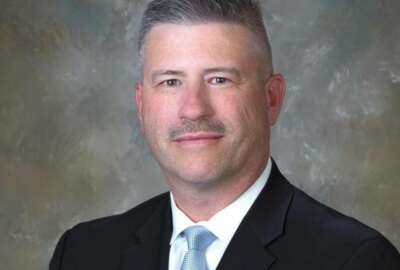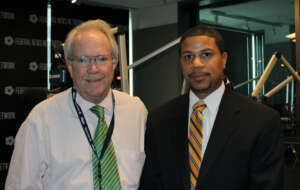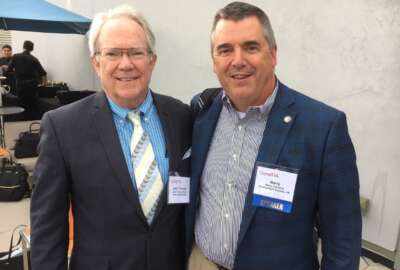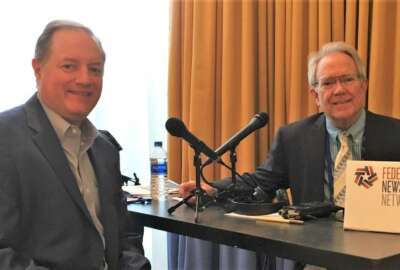
Indiana CIO appointed by Mike Pence reflects on his career thus far
Indiana CIO Dewand Neely discussed working with constitutional officers, his security maturity/assessment model and proudest accomplishments.
State chief information officers come from a diverse set of backgrounds and I am never surprised when I hear about a new road to the position. In the case of Indiana CIO Dewand Neely, he also claims a relatively unique pedigree. His entire government career consists of almost 15 years in the office of the state CIO working his way from entry level employee to the top job.
After a brief IT consulting stint after college, he joined the Indiana office of technology, which had just been created in 2005 under a consolidation initiative by then Gov. Mitch Daniels. Ten years later it was then governor, now Vice President Mike Pence who appointed Neely as state CIO. Neely was reappointed in 2017 by Gov. Eric Holcomb.
Neely was among a select number of state CIOs who were appointed early this year by the National Association of State Chief Information Officers (NASCIO) to serve as a representative on the Global Justice Information Sharing Initiative’s Global Advisory Committee (GAC).
As a member of the GAC, Neely advises the U.S. attorney general on information sharing issues. Neely was in Washington, D.C., recently attending a GAC meeting and we were fortunate to have him stop by our studio for a chat.

Appointed CIO by then governor, now Vice President Mike Pence
Indiana’s office of technology was a cabinet agency when it was created by Daniels, and maintained that status under Pence. Holcomb, on the other hand, reorganized the state CIO office which now reports up through the Office of Management and Budget, one of several common state CIO scenarios.
Neely described his agency’s function as that of an infrastructure provider hosting enterprise applications across state agencies.
“The lines of business specific applications still are the responsibility of the agencies. They do run in my data center. And so in order to serve that demand, which continues to grow, our budget for infrastructure services is around $130 million this year,” he said.
For his agency’s organizational structure, Neely has created an executive team that includes six individuals, including himself. There’s a technology officer, a financial officer, an administrative officer and a security officer.
“There’s also an operations officer to make sure the trains are still running and we’re doing the blocking and tackling as we should be,” Neely explained.
Related Stories

Cybersecurity, executive leadership and ransomware: To pay or not
“A cousin of mine, his wife happened to see the governor at an event there and they don’t realize how large state government is. And so they just assumed, hey, he’s going to know Dewand.” Neely said she mentioned to the governor, “Hey, my cousin Dewand works for you,” to which Pence replied, “Yeah, I know Dewand.” Neely was definitely excited that the governor remembered his name.
“You know how big our state is, that he would even know to remember that and recite that to them. So that’s kind of the story of how he was, and never in a million years working for him did I think he’d be vice president,” Neely said.
Expanding role with non-executive agency customers
A large measurement of Neely’s success as state CIO can be evidenced by his organization’s expanding role in serving non-executive departments in Indiana, a rather unique development. As is commonplace for most state CIO organizations, Neely has legislative authority to provide infrastructure services for executive agencies. Other offices, particularly constitutional ones normally fall outside of this jurisdiction. “I would say my office has really had success in the services it provides and initially started with just the executive branch only. I have since been able to span into some of the statewide elected offices as well,” Neely said.
A major initiative planned for next year continues this development. Neely will oversee the integration of the state’s payroll function which is largely a state auditor responsibility.
“We want to integrate those payroll functions into the executive branch ERP,” he said.
I mentioned that it had been my experience as CIO in two states that potentially taking over IT jurisdiction from these constitutional offices often generated a third rail warning. However, Neely was proud of his agency’s ability and reputation to facilitate this development.
“I think it’s a testament really to our agency itself and the previous leadership being able to do what I call the blocking and tackling very well.” Neely said. “You don’t make it to the table to talk about these above and beyond things if you don’t do the blocking and tackling, and what I call your core responsibilities very well.”
Recognized business-IT alignment critical
“We’ve had a heavy focus on cost competitiveness and each year that message is continuing to make its way across the hallways in the state house. It’s led to taking over services for the secretary of state a few years back. Right now we’re talking to the auditor’s office and also talking to our attorney general,” Neely said. These organizations realize that it’s better to allow someone who does that blocking and tackling very well to handle things, and then it frees them up to focus on what their core business objectives are.
IT and business alignment is always a major goal for every state CIO and it’s no different in Indiana. Neely stresses the fact that he wears two hats.
“I have two titles: I have a director’s title and a CIO’s title, and I think it probably took me about a year or a year and a half to figure out. I was neglecting that director hat and focusing only on the CIO hat,” he said. As a result Neely has really stepped up his game in that area to make sure he’s scheduling key meetings. “There are lunches or just monthly checkpoints with agency leadership, the actual agency heads themselves and understanding what their priorities are.”
There’s usually no agenda for the meetings. He just asks a lot of questions trying to understand what the objectives are and where they’re going. He also brings in his deputies for the more strategic or technology-related issues. “That’s really helped with some of those conversations I have with agency leadership, knowing that I’m taking into account their priorities and figuring out how I can work a longer term plan that’s going to benefit them from a cost perspective.”
That cost perspective is obviously a major one but interestingly Neely only has budgetary control over his own agency. Unlike most state CIOs, while he works very closely with the state budget agency, he does not have final say over other agency IT budgets, perhaps a challenging shortcoming in my opinion.
Security, per usual, is a top concern
Our conversation naturally covered security, a top priority for all CIOs. He was very proud of the job his chief information security officer, Bryan Sacks, has done helping Indiana figure things out at a state level.
“As you can imagine, the challenge is massive. And you can have folks going 13 different ways and when that happens, you’re not truly making any progress as a state collectively if everyone’s going different directions,” Neely said. He believes Sacks has really excelled by putting together a program that’s all risk-based. He’s been able to take publications adopted from the National Institute of Standards and Technology framework for the state of Indiana.
“He’s been able to take that publication and turn it into a business maturity/assessment plan to where any business, any agency can read it, and basically translate what this means for their line of business for their folks and how they serve the citizens,” Neely said.
Each year agencies are required to go through that maturity assessment and identify any gaps and risks, and then create a plan and a funding strategy for how they plan to address those risks.
“We just put them on a scorecard and that keeps everyone going towards that same path,” Neely said. “We measure them to make sure they’re following up on things.”
Finally, I asked Neely about his proudest accomplishments in his four years as state CIO.
“I think what I’m most proud of is the growth that our agency has been able to sustain. I think being able to talk about helping to assist statewide elected organizations from a central IT perspective is a sign of a good track record, good performance, good relationships, and building trust,” he said.
Copyright © 2025 Federal News Network. All rights reserved. This website is not intended for users located within the European Economic Area.





